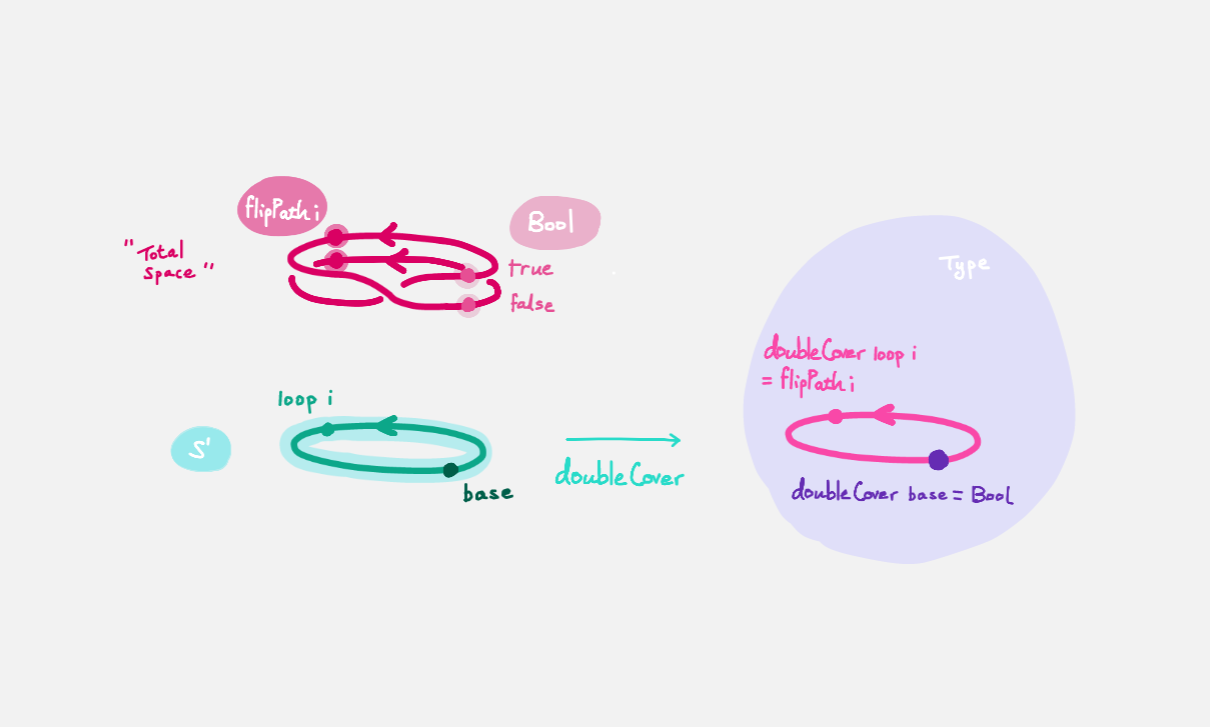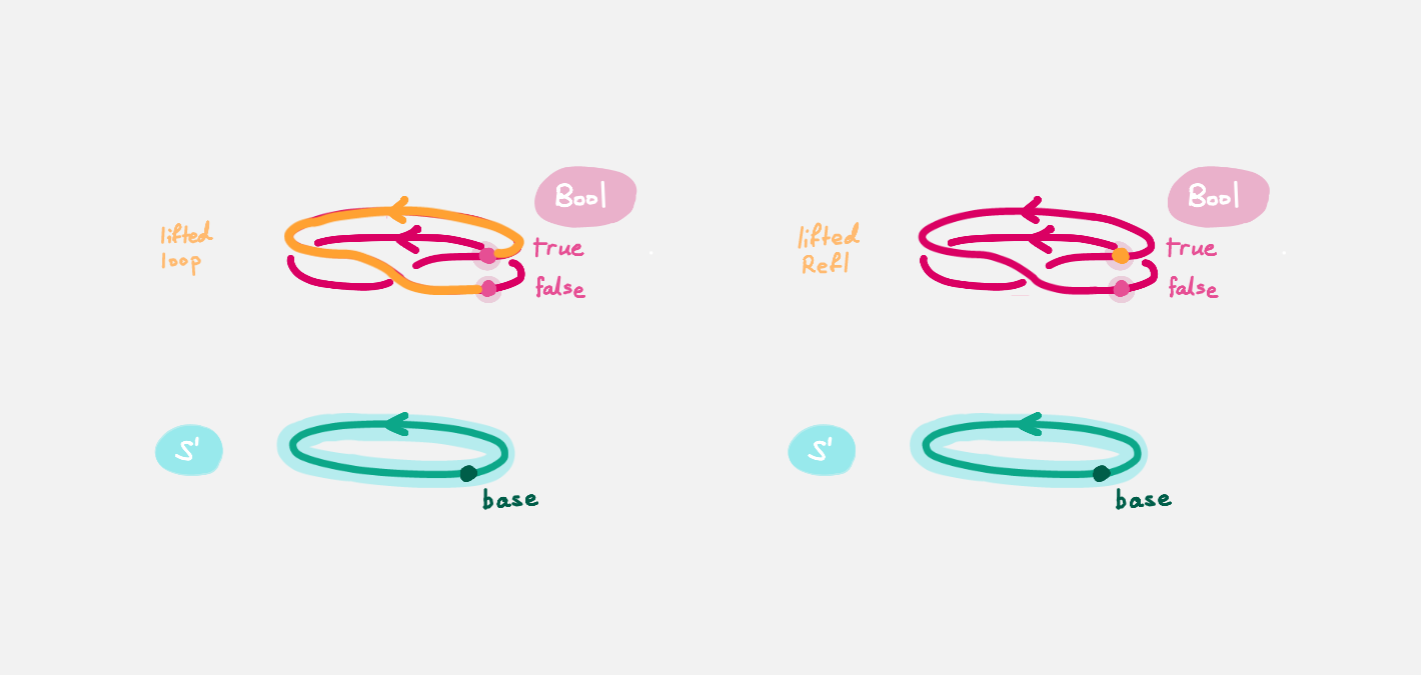3.8 KiB
Refl ≡ loop is empty
To get a better feel of S¹, we show that the space of paths (homotopies) between
Refl and loop, written Refl ≡ loop, is empty.
First, we define the empty space and what it means for a space to be empty.
Here is what this looks like in agda :
data ⊥ : Type where
This says "the empty space ⊥ is a space with no points in it".
Here are three candidate definitions for a space A to be empty :
- there is a point
f : A → ⊥in the space of functions fromAto the empty space - there is a path
p : A ≡ ⊥in the space of spacesTypefromAto the empty space - there is an isomorphism
i : A ≅ ⊥of spaces
These turn out to be 'the same' (see 1FundamentalGroup/Quest0SideQuests/SideQuest0),
however for our present purposes we will use the first definition.
Our goal is therefore to produce a point in the function space
( Refl ≡ loop ) → ⊥
The authors of this series have thought long and hard about how one would come up with the following argument. Unfortunately, sometimes mathematics is in need of a new trick and this was one of them.
The trick is to make a path
p : true ≡ falsefrom the assumed path (homotopy)h : Refl ≡ loopby constructing a non-trivialBool-bundle over the circle, hence obtaining a map( Refl ≡ loop ) → ⊥.
To elaborate :
Bool here refers to the discrete space with two points true, false.
(To find out the definition of Bool in agda
you can hover over Bool in agda and use M-SPC c d.)
We will create a map doubleCover : S¹ → Type that sends
base to Bool and the path loop to a non-trivial path flipPath : Bool ≡ Bool
in the space of spaces.
Viewing the picture vertically,
for each point x : S¹,
we call doubleCover x the fiber of doubleCover over x.
All the fibers look like Bool, hence our choice of the name Bool-bundle.
We will get a path from true to false
in the fiber of doubleCover over base
by 'lifting the homotopy' h : Refl ≡ loop and considering the end points of
the 'lifted paths'.
Refl will 'lift' to a 'constant path' and loop will 'lift' to
Let's assume for the moment that we have flipPath already and
define doubleCover.
-
Navigate to the definition of
doubleCoverand make sure you have loaded the file withC-c C-l.doubleCover : S¹ → Type doubleCover x = {!!} -
Navigate your cursor to the hole, write
xand doC-c C-c. Thecstands for cases. You should now see two new holes :doubleCover : S¹ → Type doubleCover base = {!!} doubleCover (loop i) = {!!}This means :
S¹is made from a pointbaseand an edgeloop, so a map out ofS¹to a space is the same as choosing a point and an edge to mapbaseandloopto respectively. Sinceloopis a path frombaseto itself, its image must also be a path from the image ofbaseto itself. -
Use
C-c C-fand/orC-c C-bto navigate to the first hole. We want to mapbasetoBoolso fill the hole withBoolusingC-c C-SPC. -
Navigate to the second hole. Here
loop iis a generic point in the pathloop, wherei : Iis a generic point of the 'unit interval'. We want to maplooptoflipPath, soloop ishould map to a generic point in the pathflipPath. Try filling the hole. -
Once you think you are done, reload the
agdafile withC-c C-land if it doesn't complain this means there are no problems with your definition.
Defining flipPath is quite involved and we will do so in the next quest!

